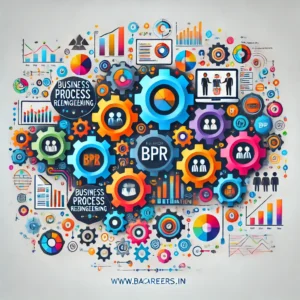Strategic Planning for Business Analysts
Introduction
Strategic Planning for Business Analysts : Strategic planning is a critical aspect of business analysis that helps organizations align their goals, resources, and processes for long-term success. A Business Analyst (BA) plays a crucial role in strategic planning by identifying business needs, analyzing data, and providing actionable insights.

In this article, we will cover:
- What is strategic planning in business analysis?
- The 5 stages of strategic planning
- The 7 steps of strategic planning
- The role of business analytics in strategic planning
- Strategy Analyst vs Business Analyst
- Strategic Business Analyst job description
- How to develop strategic planning skills as a Business Analyst
What is Strategic Planning in Business Analysis?
Strategic planning in business analysis refers to the structured process of setting objectives, analyzing business environments, and creating a roadmap for achieving long-term goals. It involves assessing market trends, business capabilities, and risks to ensure the organization remains competitive.
A Business Analyst (BA) plays a vital role in gathering requirements, identifying key business drivers, and recommending solutions that align with the organization’s vision. They work closely with stakeholders to translate strategic goals into actionable steps.
What are the 5 Stages of Strategic Planning?
Strategic planning typically consists of five essential stages:
- Vision and Goal Setting – Define long-term goals, mission, and vision.
- Environmental Analysis – Conduct SWOT (Strengths, Weaknesses, Opportunities, and Threats) analysis, PESTLE (Political, Economic, Social, Technological, Legal, Environmental) analysis, and competitor analysis.
- Strategy Formulation – Identify strategic initiatives, define objectives, and develop action plans.
- Strategy Implementation – Allocate resources, establish key performance indicators (KPIs), and execute the plan.
- Monitoring and Evaluation – Track progress, measure success, and adjust strategies as needed.
What are the 7 Steps of Strategic Planning?
The 7 key steps involved in strategic planning are:
- Define Business Objectives – Establish clear, measurable goals.
- Conduct Market Research – Analyze industry trends, competitors, and customer behavior.
- Perform Gap Analysis – Identify gaps between current and desired performance.
- Develop Actionable Strategies – Create detailed strategies for different business functions.
- Allocate Resources – Assign budgets, personnel, and tools to execute plans.
- Implement the Plan – Execute strategies with the help of project teams.
- Review and Adapt – Monitor results and refine strategies based on performance metrics.
The Role of Business Analytics in Strategic Planning
Business analytics is an essential tool in strategic planning as it helps in:
- Data-driven decision-making – Analyzing historical and real-time data to make informed choices.
- Predictive analysis – Forecasting future trends and market behavior.
- Performance measurement – Tracking business KPIs and ROI on strategic initiatives.
- Risk assessment – Identifying potential risks and mitigation strategies.
Business Analysts use tools like Power BI, Tableau, and Google Analytics to support data-driven strategic planning.
Strategy Analyst vs Business Analyst
Although both Strategy Analysts and Business Analysts contribute to business success, their roles differ:
| Aspect | Strategy Analyst | Business Analyst |
|---|---|---|
| Focus | Long-term business strategy | Day-to-day operations and improvements |
| Key Skills | Market research, competitive analysis, forecasting | Requirement gathering, process analysis, stakeholder management |
| Tools Used | SWOT, PESTLE, Financial Modeling | UML diagrams, BPMN, Use Case Modeling |
| Work Scope | High-level corporate strategy | Tactical project execution |
Strategic Business Analyst Job Description
A Strategic Business Analyst works on bridging the gap between business strategy and operational execution. Their responsibilities include:
- Conducting business and competitive analysis
- Identifying process improvements and cost reduction strategies
- Developing business cases for new initiatives
- Collaborating with executives and department heads
- Analyzing market trends and risks
A Strategic Business Analyst must have strong analytical, problem-solving, and communication skills to drive business growth.
How to Develop Strategic Planning Skills as a Business Analyst?
To build expertise in strategic planning, a Business Analyst should:
- Learn Business Analysis Frameworks – Understand models like SWOT, PESTLE, and Porter’s Five Forces.
- Develop Data Analysis Skills – Master tools like Excel, SQL, Power BI, and Python.
- Enhance Communication & Stakeholder Engagement – Practice presenting insights to decision-makers.
- Gain Industry Knowledge – Stay updated with market trends and emerging technologies.
- Work on Real-World Projects – Gain practical experience through business case studies and strategic planning simulations.
Internal and External Links for Further Learning
- Business Analyst Career Path and Salary
- Best Business Analysis Certifications
- Harvard Business Review – Strategic Planning Guide
Conclusion
Strategic planning is a key responsibility of Business Analysts, helping organizations achieve their long-term vision through data-driven insights and structured methodologies. By mastering strategic frameworks, business analytics, and effective decision-making, Business Analysts can become valuable assets in organizational growth.
Would you like to learn more about strategic business analysis? Explore our other articles on business analysis methodologies and career tips!

Business Analyst , Functional Consultant, Provide Training on Business Analysis and SDLC Methodologies.










